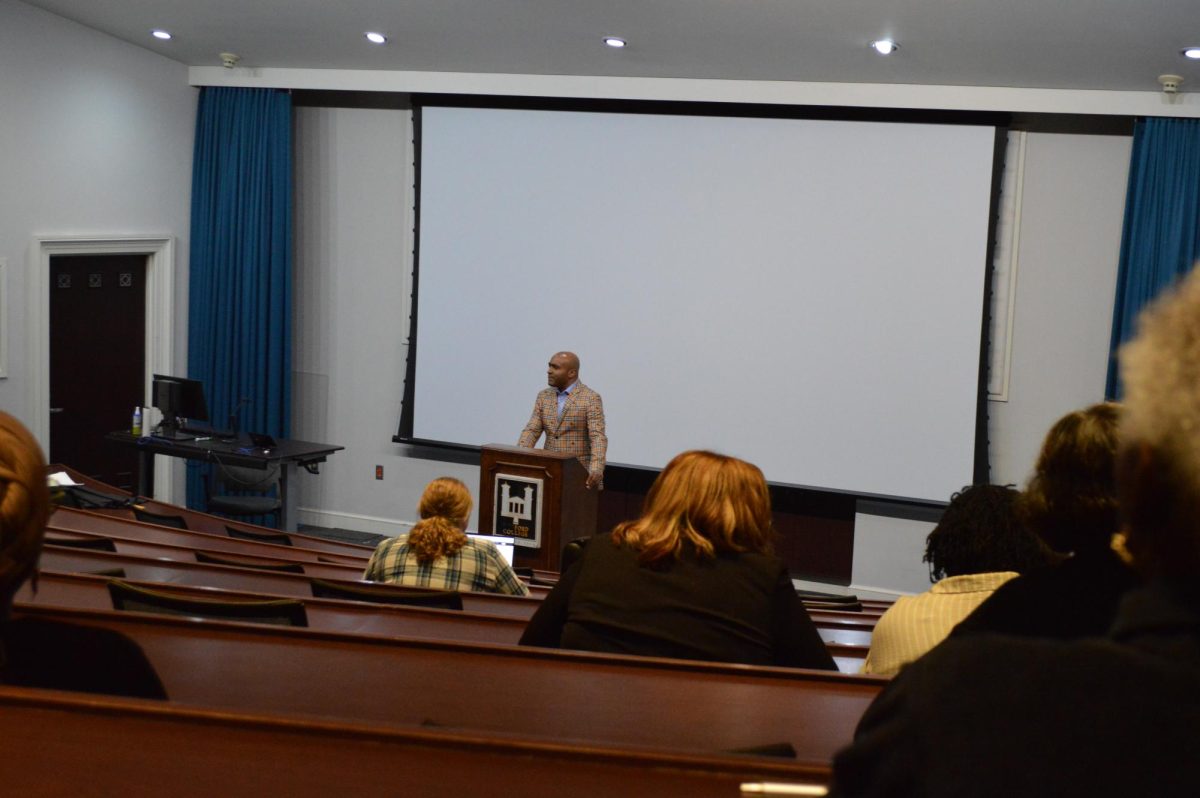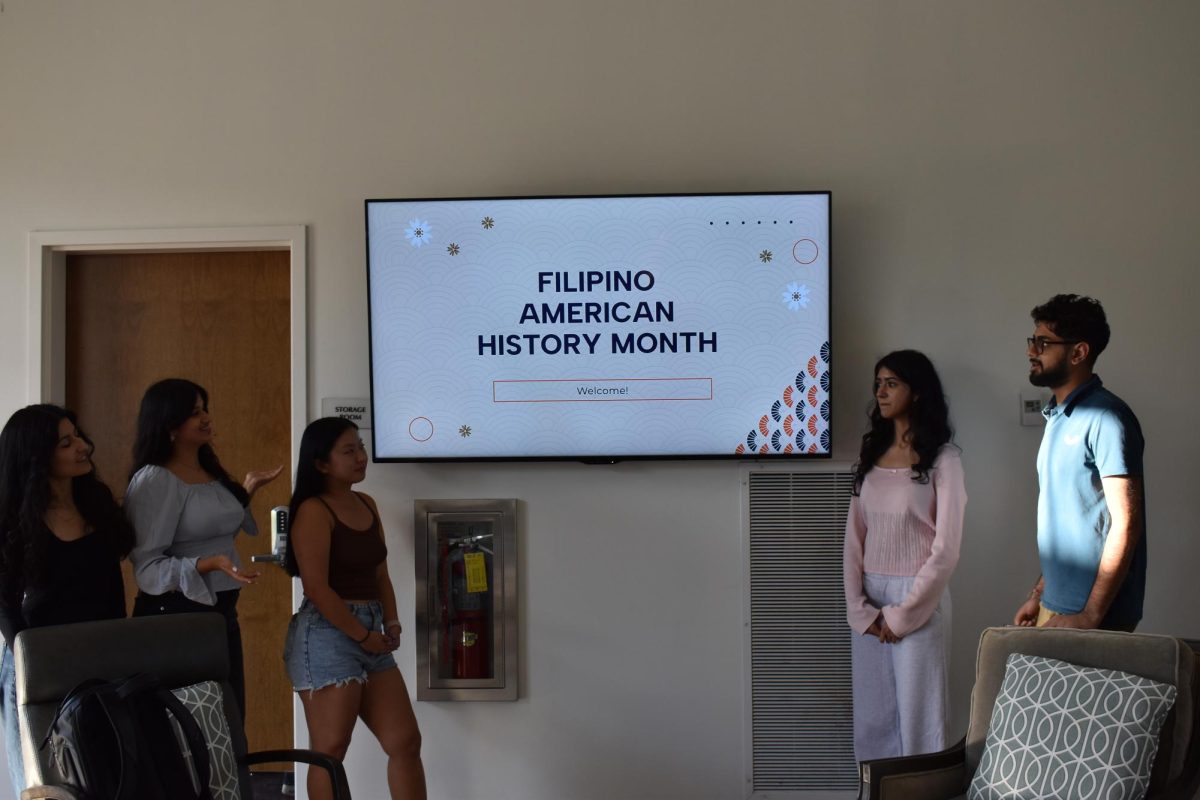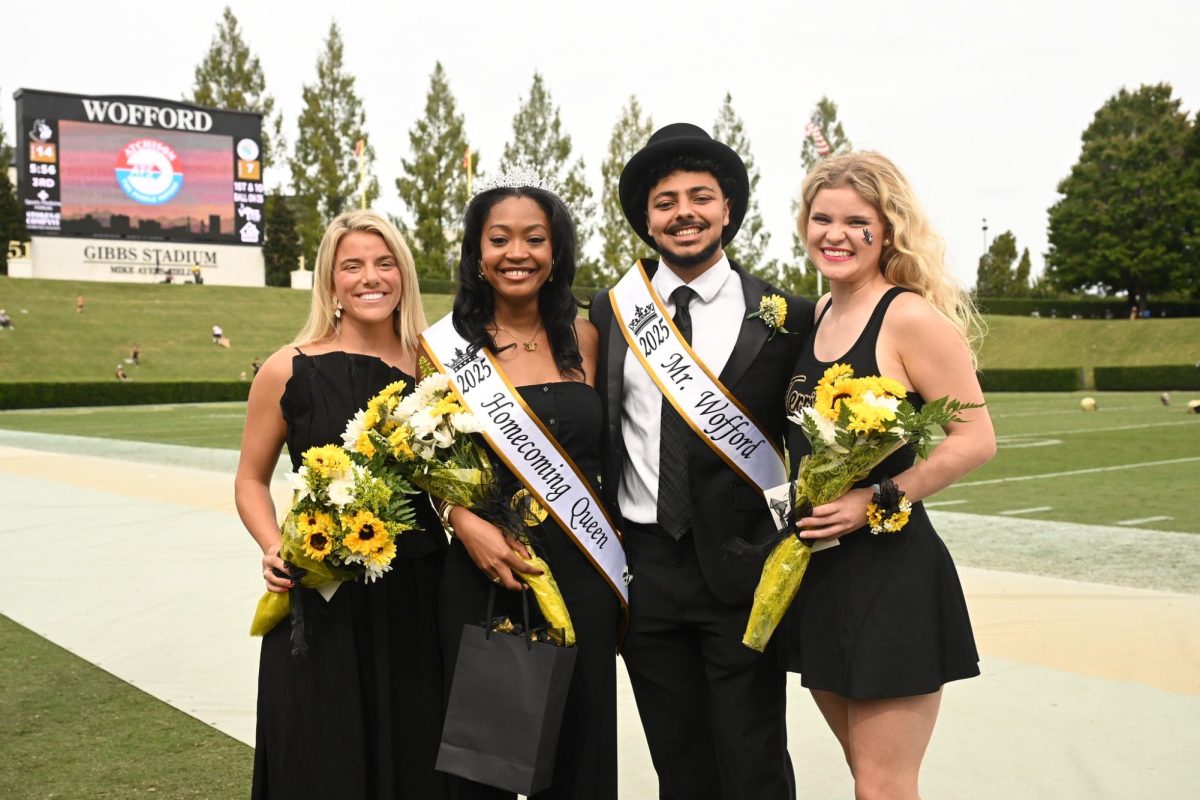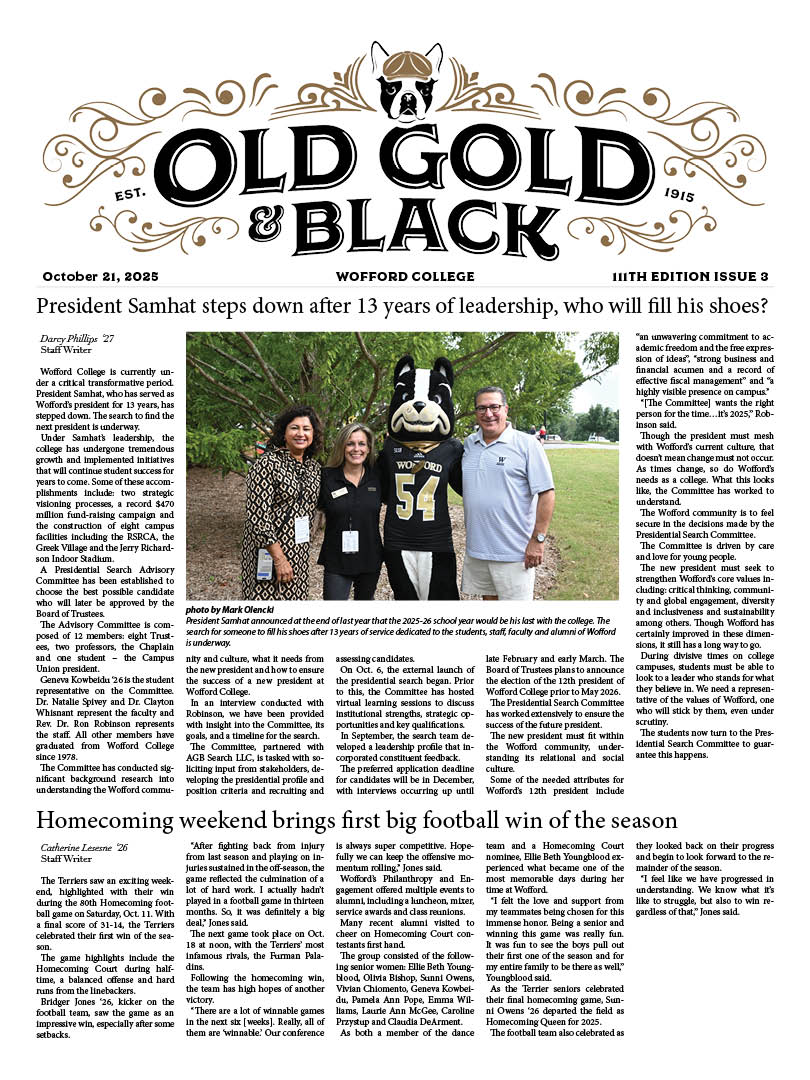By: Essence Buckman, Senior Writer
A few weeks before the 2017-2018 school year commenced on Wofford’s campus, two pictures caused a frenzy amongst the current Wofford community, alumni, family and friends. One picture, believed to have been taken in the early 2000s, featured White women who appear to be a part of a sorority, dressed for a function. A few alumni from Wofford posted it on Facebook. Many people commented expressing their anger, confusion and misunderstanding with the gray scale colored photo. The content of the photo showed the women wearing white tank tops, skull caps and appearing to be painted darker. That photo led some to believe that they were in Black face, while others believed they were painted blue, hence the words “smurfette” on their shirts. However, one shirt was labeled “ghetto smurfette,” which was taken to be offensive considering the negative meaning that the word ghetto implies, as well as implicating one specific group of people—Black people.
In addition to the controversial “smurfette” photo, another photo taken from the 1981 Wofford yearbook has resurfaced. This photo has garnered so much attention that it appeared on WSPA, the local news station for the Upstate. The Old Gold & Black student newspaper has a satirical issue called “Black & Blue” that is released every school year. The 2017 edition of “Black & Blue” featured an article with a Halloween photo of Kappa Alpha Order fraternity members dressed in Black face and in white hoodies resembling the Ku Klux Klan. The men in that photo obviously confirmed that they meant to resemble the KKK due to the letters “KKKA” being written on their costumes.
“I think the photo that surfaced is a fair image of what is clearly an issue that Wofford has continued to have,” says Kevin Quis ’19. “Although the intentions of those who participated probably weren’t harmful, the insensitivity displayed is an issue still present today.”
Now, “Black & Blue” is not to be taken as serious or even legitimate news, and for anyone who does not know what satire is, it is meant to use humor or sarcasm to highlight various issues that exist.
I’m sure Wofford’s past is quite obvious but if it isn’t, I can remind you. This school that was founded in 1854 in the South, witnessed the enrollment of its first Black student, Albert W. Gray, Class of ‘71 in 1964, and its first Black graduate Douglas Jones Sr., Class of ’69. In addition to that, I cannot count how many times I’ve been reminded that Old Main, the place where I have taken most of my classes in my four years here, was built by slaves. We also live on a campus where the majority of the students and the Wofford community in general are White.
It is 2017, but this campus and, more broadly, this country, have so much more progress to witness when it comes to issues of microagressions and covert and overt racism. Reflecting on what has happened on other predominately White college campuses, it should be no surprise that racially-motivated, hurtful things can happen on this campus too.
I remember seeing some comments of disbelief on the “ghetto smurfette” picture. Some students are genuinely shocked and can’t believe a picture like that or the “KKKA” picture reflect and feature students of Wofford. In order to combat racism, one cannot pretend that it no longer exists. They also can’t believe that it doesn’t or hasn’t existed on this campus.
Since these pictures have resurfaced, Wofford’s Campus Union and the editors of this newspaper have released statements regarding the controversy. These pictures have sparked an array of emotions, and that is why I believe it is vital for White students to be more open to being more informed by attending various events that Black students and other students of color may hold in order to open the dialogue on issues dealing with race. Whether you like it or not, race exists. It doesn’t exist biologically, but, rather, is a social construct that has been embedded into how societies across this world have operated for many, many years.
With these pictures resurfacing from Wofford’s past, are we going to deny the harm it perpetuated? Act like it needs to be forgotten? Or will we remember this past as something that is vital and holds meaning for the people on this campus who are trying to improve it?
Many programs and events under the Office of Diversity and Inclusion will occur throughout this year to expand the dialogue on issues of Wofford’s past, and the current issues students of color face on campus. Those who are adamant to prove that this institution is moving away from the racially negative things associated with it should be open to supporting and improving the experiences of their underrepresented peers on campus—as allies.





























